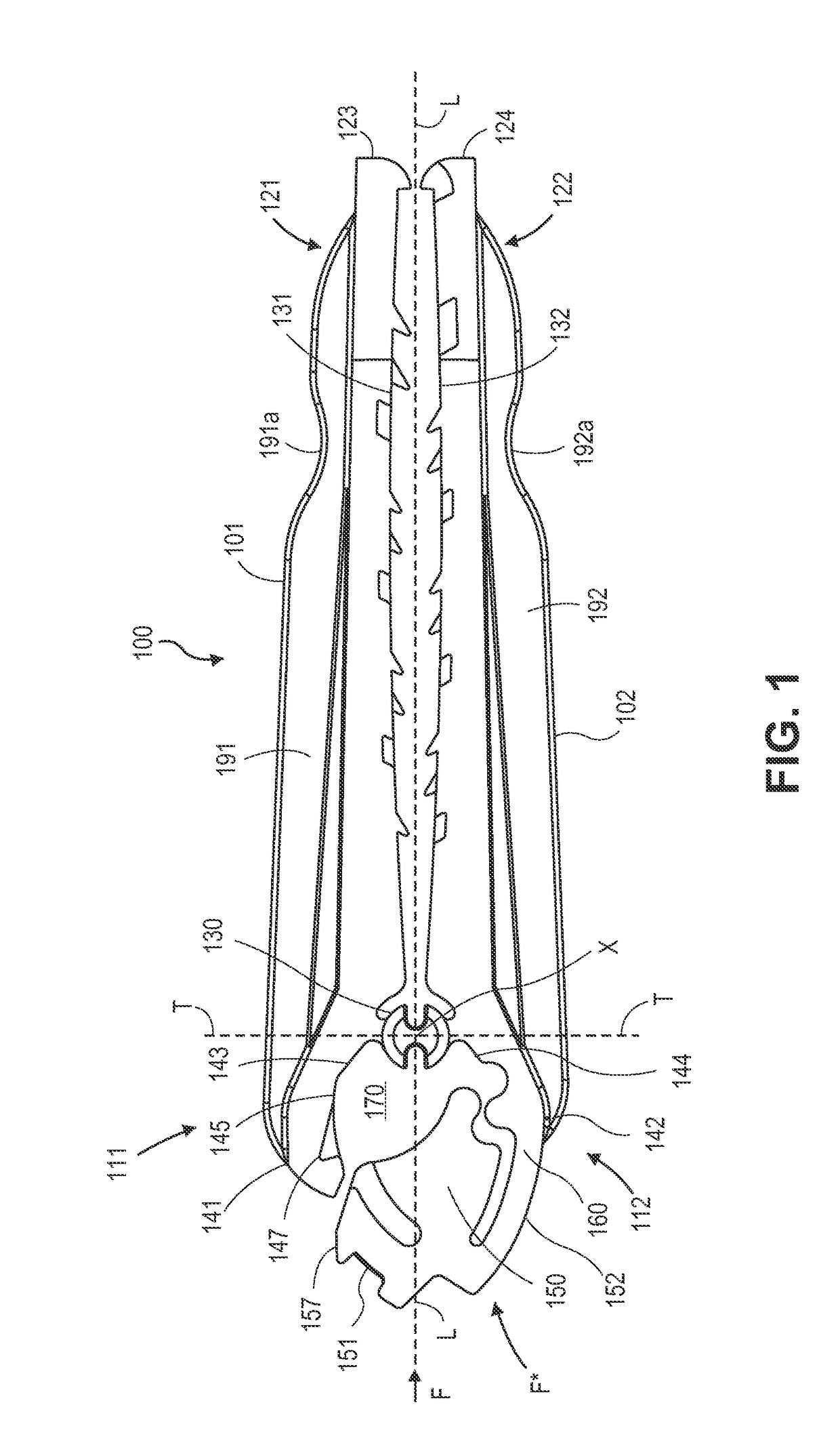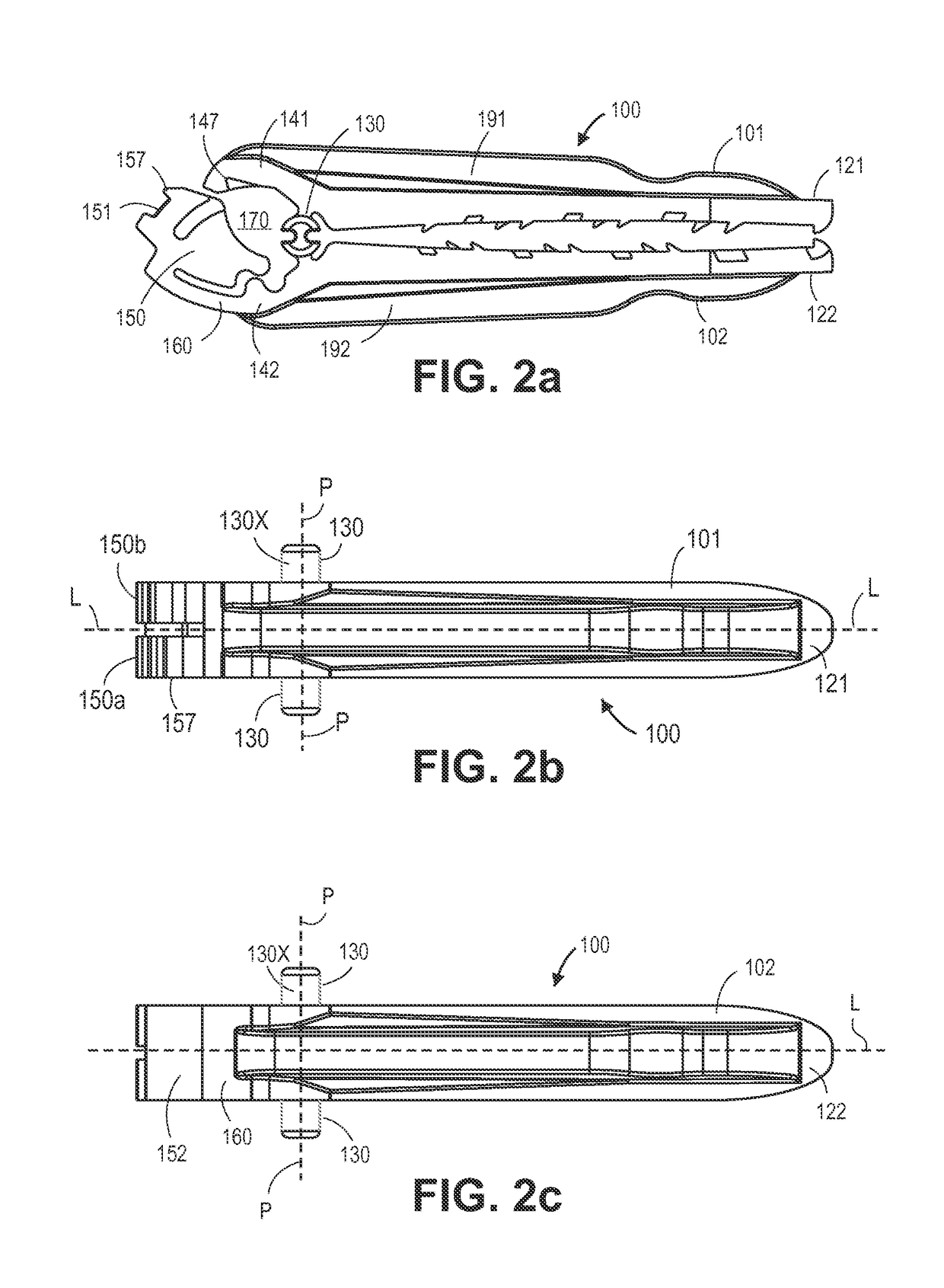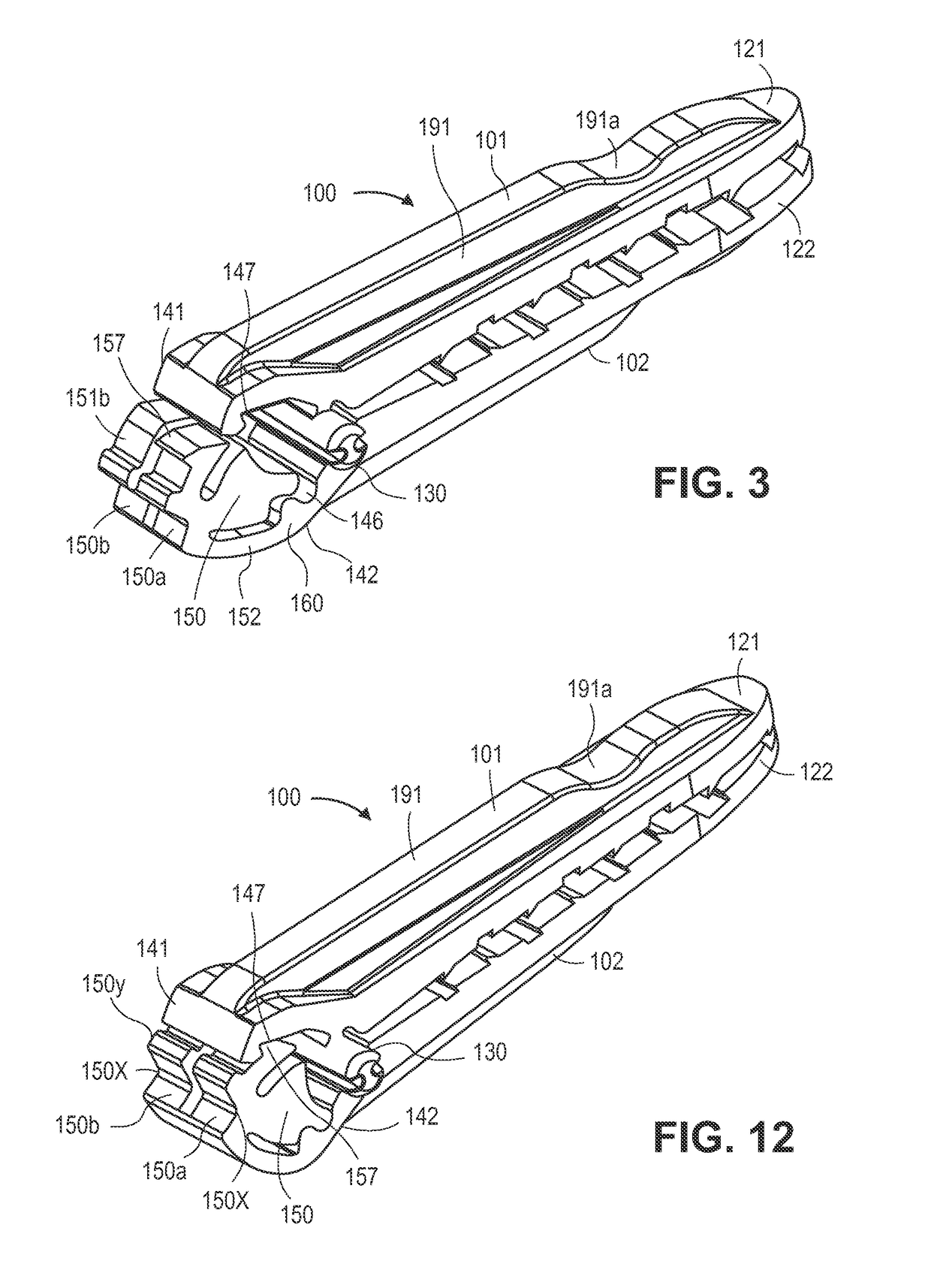Narrow profile surgical ligation clip
a surgical and clip technology, applied in the field of surgical clips, can solve the problems of limited space and visibility, time-consuming and difficult to perform and complex manipulations of surgical threads for ligation
- Summary
- Abstract
- Description
- Claims
- Application Information
AI Technical Summary
Benefits of technology
Problems solved by technology
Method used
Image
Examples
Embodiment Construction
[0047]The invention will now be described with reference to the drawing figures, in which like parts are referred to with like reference numerals throughout.
[0048]FIG. 1 shows a view of a first embodiment of a surgical ligation clip 100 of the present invention. The clip 100 defines a longitudinal axis “L” along its longest dimension and includes a first leg 101 and a second leg 102 each extending along the longitudinal axis L and having proximal 111, 112 and distal 121, 122 end portions with respect to said longitudinal axis. As used throughout herein, the term “proximal” shall refer to the portion of the clips referenced herein which is away from the tips of the clip which open, and “distal” shall refer to the portion of the clip at the tips which open, in accordance with the convention that the clip is inserted distal tip first through an instrument towards an anatomical body to be ligated, such that distal generally refers to the direction away from the user or applier of the su...
PUM
 Login to View More
Login to View More Abstract
Description
Claims
Application Information
 Login to View More
Login to View More - R&D
- Intellectual Property
- Life Sciences
- Materials
- Tech Scout
- Unparalleled Data Quality
- Higher Quality Content
- 60% Fewer Hallucinations
Browse by: Latest US Patents, China's latest patents, Technical Efficacy Thesaurus, Application Domain, Technology Topic, Popular Technical Reports.
© 2025 PatSnap. All rights reserved.Legal|Privacy policy|Modern Slavery Act Transparency Statement|Sitemap|About US| Contact US: help@patsnap.com



